
Varian Microeconomics Workout
.pdf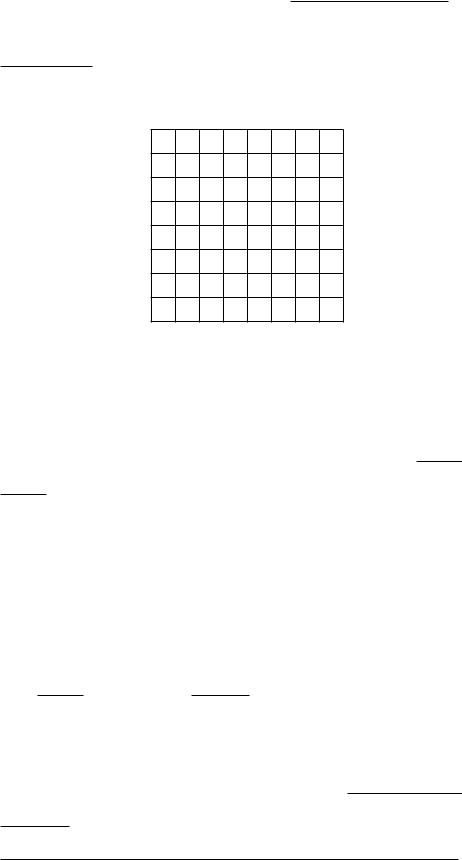
(a) How many units of curds will Miss Mu®et demand in this situation?
How many units of whey? |
|
. |
Whey
32
24
16
8
0 |
8 |
16 |
24 |
32 |
|
|
|
|
Curds |
(b) Write down Miss Mu®et's demand function for whey as a function of the prices of curds and whey and of her income, where pc is the price of
curds, pw is the price of whey, and m is her income. D(pc; pw; m) =
(Hint: You can solve for her demands by solving two equations in two unknowns. One equation tells you that she consumes twice as much whey as curds. The second equation is her budget equation.)
6.7 (1) Mary's utility function is U(b; c) = b + 100c ¡ c2, where b is the number of silver bells in her garden and c is the number of cockle shells. She has 500 square feet in her garden to allocate between silver bells and cockle shells. Silver bells each take up 1 square foot and cockle shells each take up 4 square feet. She gets both kinds of seeds for free.
(a) To maximize her utility, given the size of her garden, Mary should
plant silver bells and
her \budget constraint" for space. ordinary demand problem.)
cockle shells. (Hint: Write down Solve the problem as if it were an
(b) If she suddenly acquires an extra 100 square feet for her garden, how
much should she increase her planting of silver bells?
How much should she increase her planting of cockle shells?
.
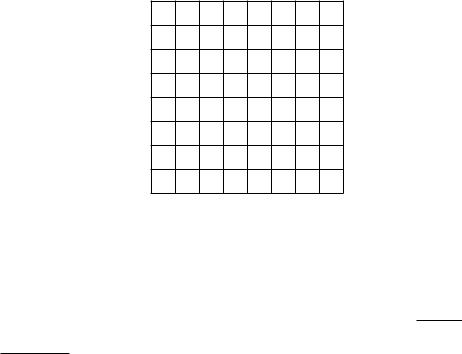
(c) If Mary had only 144 square feet in her garden, how many cockle
shells would she grow? |
|
. |
(d) If Mary grows both silver bells and cockle shells, then we know that
the number of square feet in her garden must be greater than |
|
. |
|
6.8 (0) Casper consumes cocoa and cheese. He has an income of $16. Cocoa is sold in an unusual way. There is only one supplier and the more cocoa one buys from him, the higher the price one has to pay per unit. In fact, x units of cocoa will cost Casper a total of x2 dollars. Cheese is sold in the usual way at a price of $2 per unit. Casper's budget equation, therefore, is x2 + 2y = 16 where x is his consumption of cocoa and y is his consumption of cheese. Casper's utility function is U(x; y) = 3x + y.
(a) On the graph below, draw the boundary of Casper's budget set in blue ink. Use red ink to sketch two or three of his indi®erence curves.
Cheese
16
12
8
4
0 |
4 |
8 |
12 |
16 |
|
|
|
|
Cocoa |
(b) Write an equation that says that at the point (x; y), the slope of
Casper's budget \line" equals the slope of his indi®erence \curve."
Casper demands |
|
units of cocoa and |
|
units |
of cheese.
6.9 (0) Perhaps after all of the problems with imaginary people and places, you would like to try a problem based on actual fact. The U.S. government's Bureau of Labor Statistics periodically makes studies of family budgets and uses the results to compile the consumer price index. These budget studies and a wealth of other interesting economic data can be found in the annually published Handbook of Labor Statistics. The

tables below report total current consumption expenditures and expenditures on certain major categories of goods for 5 di®erent income groups in the United States in 1961. People within each of these groups all had similar incomes. Group A is the lowest income group and Group E is the highest.
Table 6.1
Expenditures by Category for Various Income Groups in 1961
Income Group |
A |
B |
C |
D |
E |
Food Prepared at Home |
465 |
783 |
1078 |
1382 |
1848 |
Food Away from Home |
68 |
171 |
213 |
384 |
872 |
Housing |
626 |
1090 |
1508 |
2043 |
4205 |
Clothing |
119 |
328 |
508 |
830 |
1745 |
Transportation |
139 |
519 |
826 |
1222 |
2048 |
Other |
364 |
745 |
1039 |
1554 |
3490 |
Total Expenditures |
1781 |
3636 |
5172 |
7415 |
14208 |
Table 6.2
Percentage Allocation of Family Budget
Income Group |
A |
B |
C |
D |
E |
|
|
|
|
|
|
Food Prepared at Home |
26 |
22 |
21 |
19 |
13 |
|
|
|
|
|
|
Food Away from Home |
3.8 |
4.7 |
4.1 |
5.2 |
6.1 |
|
|
|
|
|
|
Housing |
35 |
30 |
|
|
|
|
|
|
|
|
|
Clothing |
6.7 |
9.0 |
|
|
|
|
|
|
|
|
|
Transportation |
7.8 |
14 |
|
|
|
|
|
|
|
|
|
(a) Complete Table 6.2.
(b) Which of these goods are normal goods? .
(c) Which of these goods satisfy your textbook's de¯nition of luxury goods
at most income levels? .
(d) Which of these goods satisfy your textbook's de¯nition of necessity
goods at most income levels? .
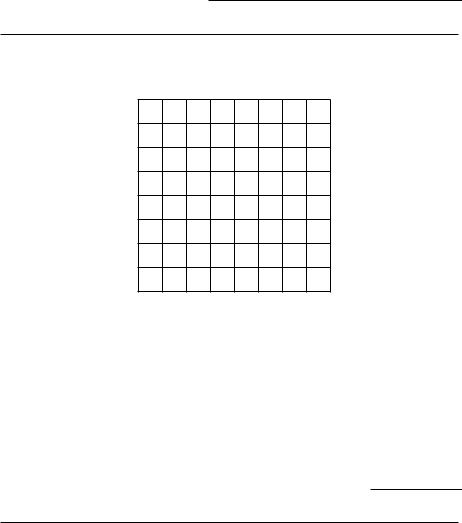
(e) On the graph below, use the information from Table 6.1 to draw \Engel curves." (Use total expenditure on current consumption as income for purposes of drawing this curve.) Use red ink to draw the Engel curve for food prepared at home. Use blue ink to draw an Engel curve for food away from home. Use pencil to draw an Engel curve for clothing. How does the shape of an Engel curve for a luxury di®er from the shape
of an Engel curve for a necessity?
.
Total expenditures (thousands of dollars)
12
9
6
3
0 750 1500 2250 3000 Expenditure on speci¯c goods
6.10 (0) Percy consumes cakes and ale. His demand function for cakes is qc = m ¡ 30pc + 20pa, where m is his income, pa is the price of ale, pc is the price of cakes, and qc is his consumption of cakes. Percy's income is $100, and the price of ale is $1 per unit.
(a) Is ale a substitute for cakes or a complement? Explain.
.
(b) Write an equation for Percy's demand function for cakes where income
and the price of ale are held ¯xed at $100 and $1. |
|
. |
(c) Write an equation for Percy's inverse demand function for cakes where
income is $100 and the price of ale remains at $1. |
|
|
At |
||
|
|
||||
what price would Percy buy 30 cakes? |
|
|
Use blue ink to draw |
||
Percy's inverse demand curve for cakes. |
|
|
|||
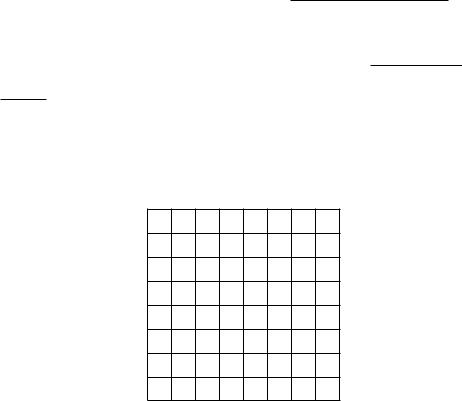
(d) Suppose that the price of ale rises to $2.50 per unit and remains there.
Write an equation for Percy's inverse demand for cakes.
Use red ink to draw in Percy's new inverse demand curve for
cakes.
Price
4
3
2
1
0 |
30 |
60 |
90 |
120 |
|
|
Number of cakes |
||
6.11 (0) Richard and Mary Stout have fallen on hard times, but remain rational consumers. They are making do on $80 a week, spending $40 on food and $40 on all other goods. Food costs $1 per unit. On the graph below, use black ink to draw a budget line. Label their consumption bundle with the letter A.
(a)The Stouts suddenly become eligible for food stamps. This means that they can go to the agency and buy coupons that can be exchanged for $2 worth of food. Each coupon costs the Stouts $1. However, the maximum number of coupons they can buy per week is 10. On the graph, draw their new budget line with red ink.
(b)If the Stouts have homothetic preferences, how much more food will
they buy once they enter the food stamp program? |
|
. |
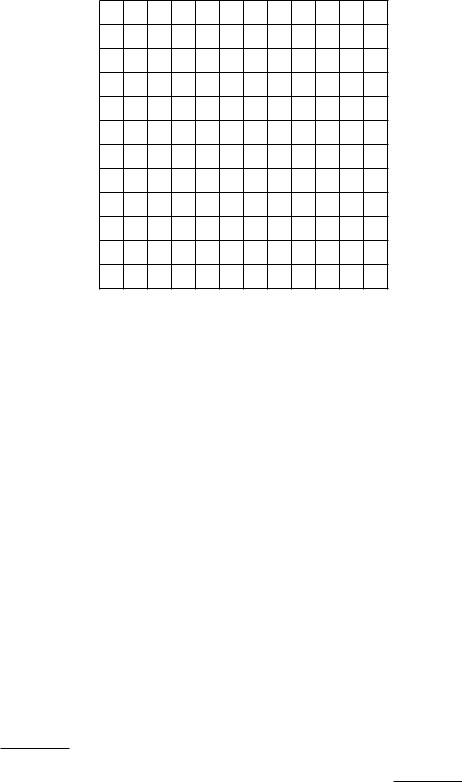
Dollars worth of other things
120
100
80
60
40
20
0 |
20 |
40 |
60 |
80 |
100 |
120 |
|
|
|
|
|
|
Food |
6.12 (2) As you may remember, Nancy Lerner is taking an economics course in which her overall score is the minimum of the number of correct answers she gets on two examinations. For the ¯rst exam, each correct answer costs Nancy 10 minutes of study time. For the second exam, each correct answer costs her 20 minutes of study time. In the last chapter, you found the best way for her to allocate 1200 minutes between the two exams. Some people in Nancy's class learn faster and some learn slower than Nancy. Some people will choose to study more than she does, and some will choose to study less than she does. In this section, we will ¯nd a general solution for a person's choice of study times and exam scores as a function of the time costs of improving one's score.
(a) Suppose that if a student does not study for an examination, he or she gets no correct answers. Every answer that the student gets right on the ¯rst examination costs P1 minutes of studying for the ¯rst exam. Every answer that he or she gets right on the second examination costs P2 minutes of studying for the second exam. Suppose that this student spends a total of M minutes studying for the two exams and allocates the time between the two exams in the most e±cient possible way. Will the student have the same number of correct answers on both exams?
Write a general formula for this student's overall score for the
course as a function of the three variables, P1, P2, and M: S =
If this student wants to get an overall score of S, with the smallest possible

total amount of studying, this student must spend |
|
minutes |
||||
|
||||||
studying for the ¯rst exam and |
|
|
|
studying for the second exam. |
||
(b) Suppose that a student has the utility function |
|
|
||||
U(S; M) = S ¡ |
A |
|
|
|||
|
M2; |
|
|
|||
2 |
|
|
||||
where S is the student's overall score for the course, M is the number of minutes the student spends studying, and A is a variable that re°ects how much the student dislikes studying. In Part (a) of this problem, you found that a student who studies for M minutes and allocates this time
wisely between the two exams will get an overall score of S = |
M |
. |
||||
|
||||||
|
M |
|
|
P1+P2 |
||
Substitute |
|
for S in the utility function and then di®erentiate with |
||||
P1+P2 |
||||||
respect to M to ¯nd the amount of study time, M, that maximizes the |
||||||
student's utility. M = |
|
Your answer will be a function of the |
||||
variables P1, P2, and A. If the student chooses the utility-maximizing amount of study time and allocates it wisely between the two exams, he
or she will have an overall score for the course of S = .
(c) Nancy Lerner has a utility function like the one presented above. She chose the utility-maximizing amount of study time for herself. For Nancy, P1 = 10 and P2 = 20. She spent a total of M = 1; 200 minutes studying for the two exams. This gives us enough information to solve for the
variable A in Nancy's utility function. In fact, for Nancy, A = |
|
. |
|
(d) Ed Fungus is a student in Nancy's class. Ed's utility function is just like Nancy's, with the same value of A. But Ed learns more slowly than Nancy. In fact it takes Ed exactly twice as long to learn anything as it takes Nancy, so that for him, P1 = 20 and P2 = 40. Ed also chooses his amount of study time so as to maximize his utility. Find the ratio of the amount of time Ed spends studying to the amount of time Nancy spends
studying. |
|
Will his score for the course be greater than half, |
||
equal to half, or less than half of Nancy's? |
|
. |
||
6.13 (1) Here is a puzzle for you. At ¯rst glance, it would appear that there is not nearly enough information to answer this question. But when you graph the indi®erence curve and think about it a little, you will see that there is a neat, easily calculated solution.
Kinko spends all his money on whips and leather jackets. Kinko's utility function is U(x; y) = minf4x; 2x + yg, where x is his consumption of whips and y is his consumption of leather jackets. Kinko is consuming 15 whips and 10 leather jackets. The price of whips is $10. You are to ¯nd Kinko's income.
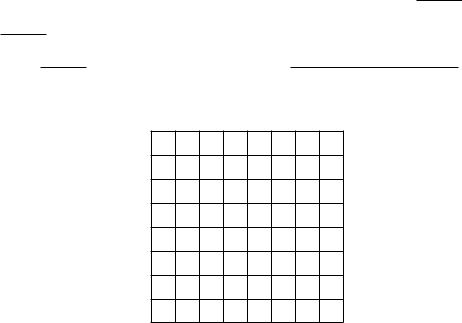
(a) Graph the indi®erence curve for Kinko that passes through the point (15; 10). What is the slope of this indi®erence curve at (15; 10)?
What must be the price of leather jackets if Kinko chooses this point? Now, what is Kinko's income? .
Leather jackets 40
30
20
10
0 |
10 |
20 |
30 |
40 |
|
|
|
|
Whips |

In the last section, you were given a consumer's preferences and then you solved for his or her demand behavior. In this chapter we turn this process around: you are given information about a consumer's demand behavior and you must deduce something about the consumer's preferences. The main tool is the weak axiom of revealed preference. This axiom says the following. If a consumer chooses commodity bundle A when she can a®ord bundle B, then she will never choose bundle B from any budget in which she can also a®ord A. The idea behind this axiom is that if you choose A when you could have had B, you must like A better than B. But if you like A better than B, then you will never choose B when you can have A. If somebody chooses A when she can a®ord B, we say that for her, A is directly revealed preferred to B. The weak axiom says that if A is directly revealed preferred to B, then B is not directly revealed preferred to A.
Let us look at an example of how you check whether one bundle is revealed preferred to another. Suppose that a consumer buys the bundle
(xA1 ; xA2 ) = (2; 3) at prices (pA1 ; pA2 ) = (1; 4). The cost of bundle (xA1 ; xA2 ) at these prices is (2 £ 1) + (3 £ 4) = 14. Bundle (2; 3) is directly revealed
preferred to all the other bundles that she can a®ord at prices (1; 4), when she has an income of 14. For example, the bundle (5; 2) costs only 13 at prices (1; 4), so we can say that for this consumer (2; 3) is directly revealed preferred to (1; 4).
You will also have some problems about price and quantity indexes. A price index is a comparison of average price levels between two di®erent times or two di®erent places. If there is more than one commodity, it is not necessarily the case that all prices changed in the same proportion. Let us suppose that we want to compare the price level in the \current year" with the price level in some \base year." One way to make this comparison is to compare the costs in the two years of some \reference" commodity bundle. Two reasonable choices for the reference bundle come to mind. One possibility is to use the current year's consumption bundle for the reference bundle. The other possibility is to use the bundle consumed in the base year. Typically these will be di®erent bundles. If the baseyear bundle is the reference bundle, the resulting price index is called the Laspeyres price index. If the current year's consumption bundle is the reference bundle, then the index is called the Paasche price index.
Suppose that there are just two goods. In 1980, the prices were (1; 3) and a consumer consumed the bundle (4; 2). In 1990, the prices were (2; 4) and the consumer consumed the bundle (3; 3). The cost of the 1980 bundle at 1980 prices is (1 £4) + (3 £2) = 10: The cost of this same bundle at 1990 prices is (2 £ 4) + (4 £ 2) = 16. If 1980 is treated as the base year and 1990 as the current year, the Laspeyres price ratio is 16=10. To calculate the Paasche price ratio, you ¯nd the ratio of the cost of the 1990 bundle
at 1990 prices to the cost of the same bundle at 1980 prices. The 1990 bundle costs (2 £ 3) + (4 £ 3) = 18 at 1990 prices. The same bundle cost (1 £ 3) + (3 £ 3) = 12 at 1980 prices. Therefore the Paasche price index is 18=12. Notice that both price indexes indicate that prices rose, but because the price changes are weighted di®erently, the two approaches give di®erent price ratios.
Making an index of the \quantity" of stu® consumed in the two periods presents a similar problem. How do you weight changes in the amount of good 1 relative to changes in the amount of good 2? This time we could compare the cost of the two periods' bundles evaluated at some reference prices. Again there are at least two reasonable possibilities, the
Laspeyres quantity index and the Paasche quantity index. The Laspeyres quantity index uses the base-year prices as the reference prices, and the Paasche quantity index uses current prices as reference prices.
In the example above, the Laspeyres quantity index is the ratio of the cost of the 1990 bundle at 1980 prices to the cost of the 1980 bundle at 1980 prices. The cost of the 1990 bundle at 1980 prices is 12 and the cost of the 1980 bundle at 1980 prices is 10, so the Laspeyres quantity index is 12/10. The cost of the 1990 bundle at 1990 prices is 18 and the cost of the 1980 bundle at 1990 prices is 16. Therefore the Paasche quantity index is 18/16.
When you have completed this section, we hope that you will be able to do the following:
²Decide from given data about prices and consumption whether one commodity bundle is preferred to another.
²Given price and consumption data, calculate Paasche and Laspeyres price and quantity indexes.
²Use the weak axiom of revealed preferences to make logical deductions about behavior.
²Use the idea of revealed preference to make comparisons of well-being across time and across countries.
7.1(0) When prices are (4; 6), Goldie chooses the bundle (6; 6), and when prices are (6; 3), she chooses the bundle (10; 0).
(a)On the graph below, show Goldie's ¯rst budget line in red ink and her second budget line in blue ink. Mark her choice from the ¯rst budget with the label A, and her choice from the second budget with the label
B.
(b)Is Goldie's behavior consistent with the weak axiom of revealed pref-
erence? |
|
. |
